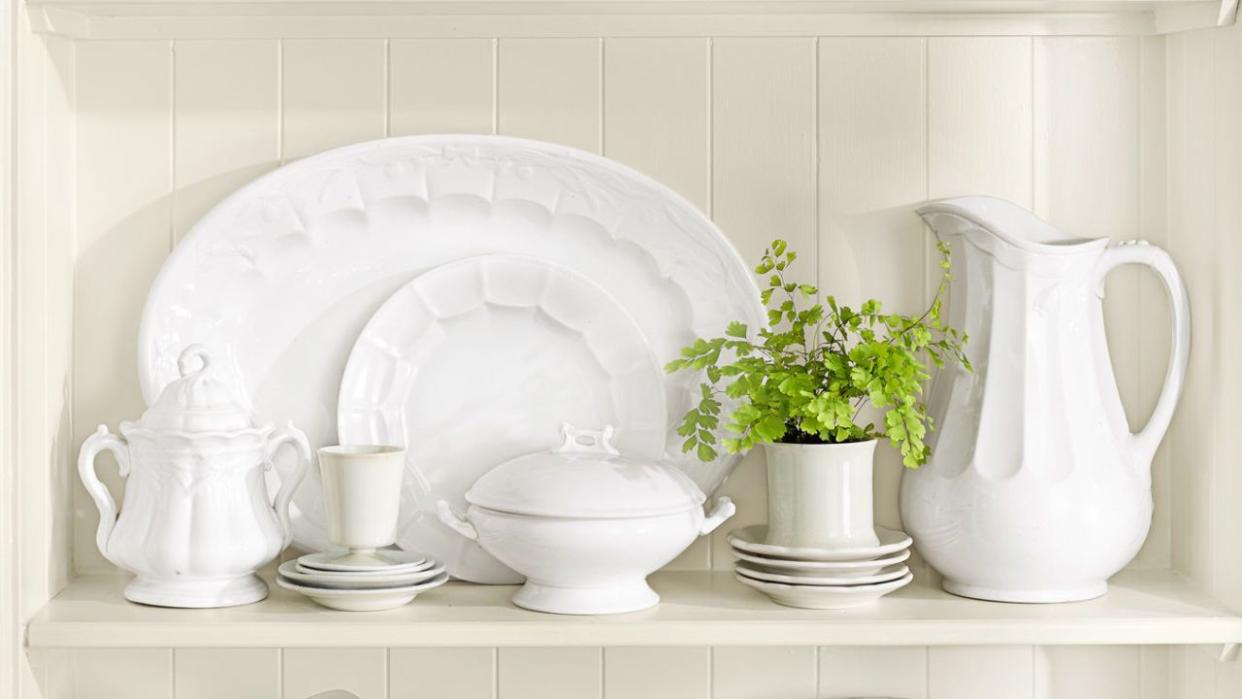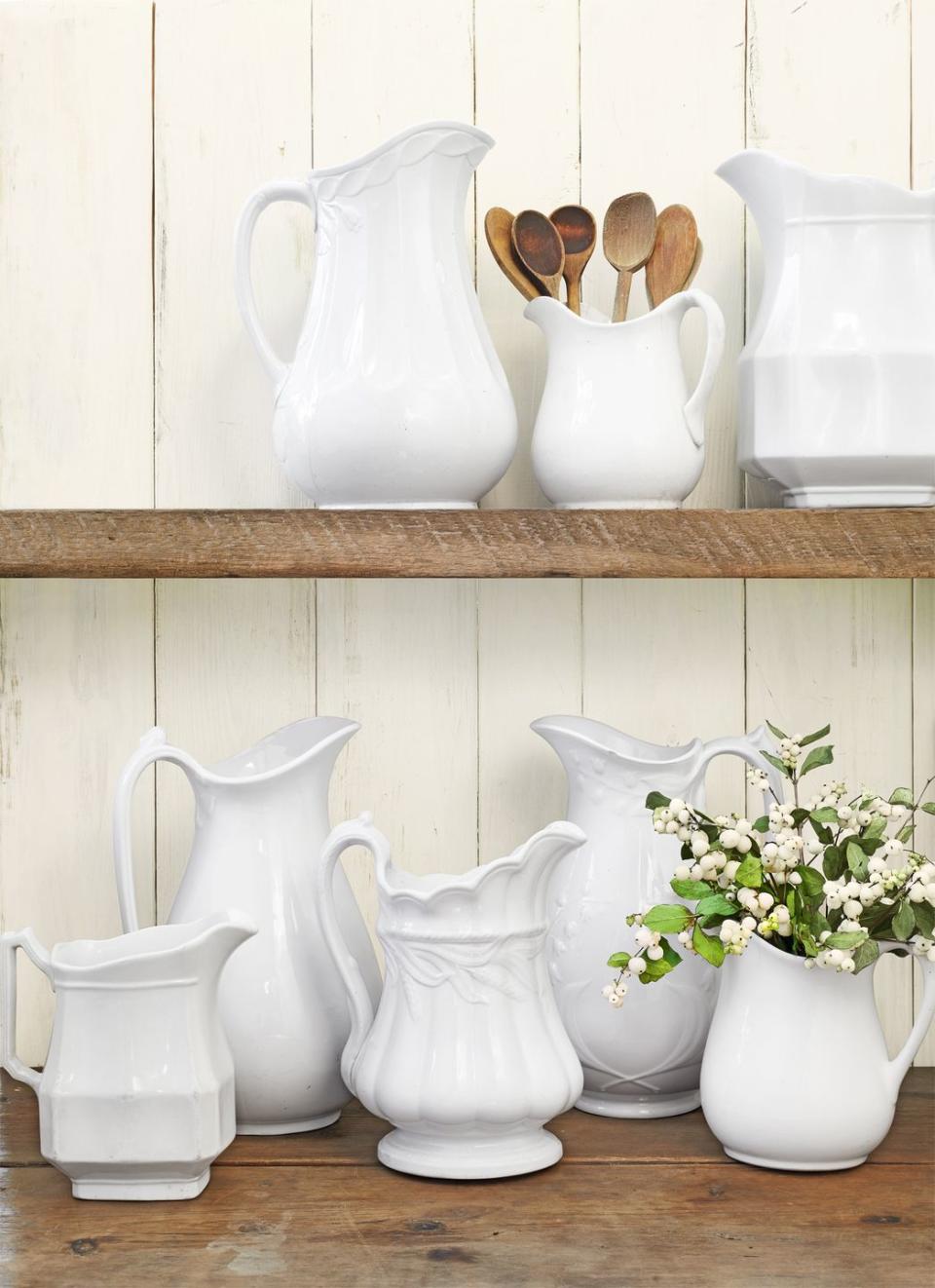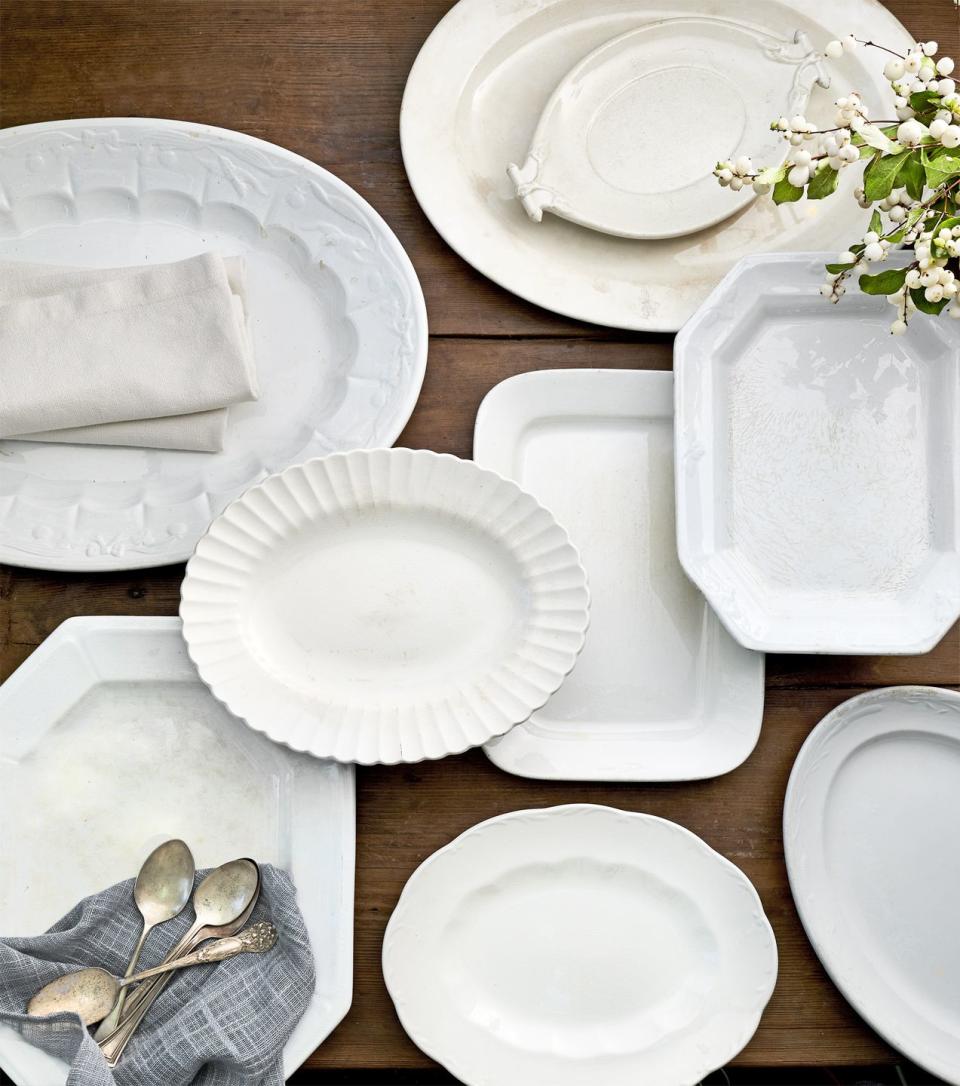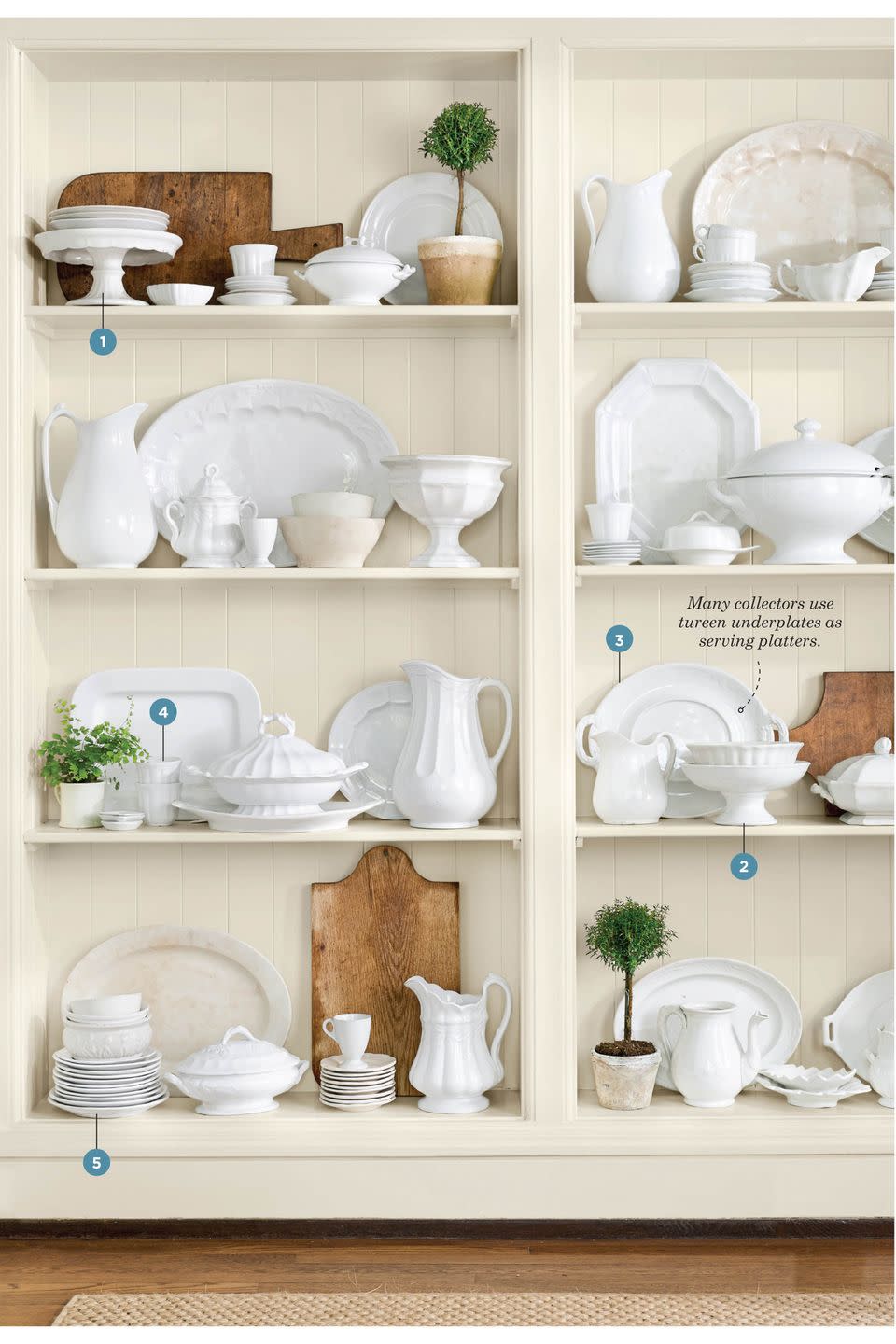Everything You Need to Know About Ironstone Pottery

Originally produced in Staffordshire, England, this simple tableware—once known as the “poor man's porcelain”—hit American tables in the 1840s. Here’s the dish on the essential pieces for a stunning whiteware collection.
*Appraisal Values Updated February 2024 by appraiser Marsha Dixey of Heritage Auctions. These values have been collected by averaging auction prices realized from different sources and may differ from prices on the same item offered for sale by a private dealer. An auction value is more or less based on rarity, condition, and desirability (bidding activity) of a specific maker, form, or pattern.
Pitchers

Originally used in washrooms, ironstone pitchers vary in design from plain to fanciful. While ornate pieces are popular, it’s the early, unadorned styles collectors covet. (Look for finds with a hexagonal or octagonal shape and a bluish tint. Later pieces are creamier in color.) Motifs became more elaborate as years went on, only to return to simpler form at the end of the 19th century.
Most pitchers now range in value from $25 (plain) to $45 (patterned), but some unique patterns can bring more. A circa-1890s milk pitcher by J. & G. Meakin is valued at $60 and showcases a pattern called Block Optic—a squared-off look reminiscent of early wares.
Collector's Tip: Look for a Mark
There are hundreds of known ironstone makers, but not all pieces bear a manufacturer’s mark. Heft and luster used to be solid indicators of authenticity, but that has changed.
“Today, it is important to look for a marking because there have been pieces designed to look like antique ironstone that were made in just the last 10 years. The color of the pottery and glaze can no longer be an accurate test for authenticity,” Marsha says. Some noted English makers to look for include J. & G. Meakin, Mason’s, and T. & R. Boote.
Platters

Trays and platters are a favorite among collectors for both their functionality and decorative appeal. Most range in price from $12 (plain) to $100 (patterned). A platter showcasing Wheat and Clover, a popular motif from the 1860s, is valued at $80. A Leaf and Crossed Ribbon embossed tray, produced by Livesley & Powell between 1851 and 1866, delivers a price tag of approximately $100.
Other Essentials

CAKESTANDS Ironstone cake pedestals are rare, and when they do surface, they're expensive. (Think anywhere from $500 to $1,500 apiece.) This no-frills style dates back to the late 19th century and is valued at $350.
COMPOTES These pieces, like this simple design from the same period, serve up a similar stately look for a fraction of the price. (This one will set you back $75.)
TUREENS From single-serving soup dishes to larger pieces meant for buffet or family-style gatherings, tureens are a must-have for the ironstone collector. Sets complete with matching lid, underplate, and ladle are coveted, with older pieces maintaining a value of around $150. But don’t write off those orphaned finds just yet. A single tureen base, like this one, fetches up to $50. Because they’re so breakable, ladles are also a hot collectors’ item, worth up to $75.
CUPS The most common early ironstone drinking cup was a teacup made without a handle. These now-prized finds were not only cheaper to produce but also more apt to survive shipping unscathed. Today, they can be found for less than $10 each or around $24 for a set of four.
PLATES Whether pint-size butter dishes or full-size dinnerware, bundles of matching ironstone plates can be hard to find. Mismatched motifs work together beautifully, and single plates can be found for just a few bucks a pop. Prefer a matching set? Look for wheat-decorated styles from the 1860s, a fairly common find valued at around $40 for a set of 4. Pieces that have patterns still bring higher values, especially if you have a complete set.
Special thanks to Country Living Fair vendor Scarlett Scales for allowing us to photograph her collection for this story.
RELATED: The Collector's Guide to Jadeite
You Might Also Like

